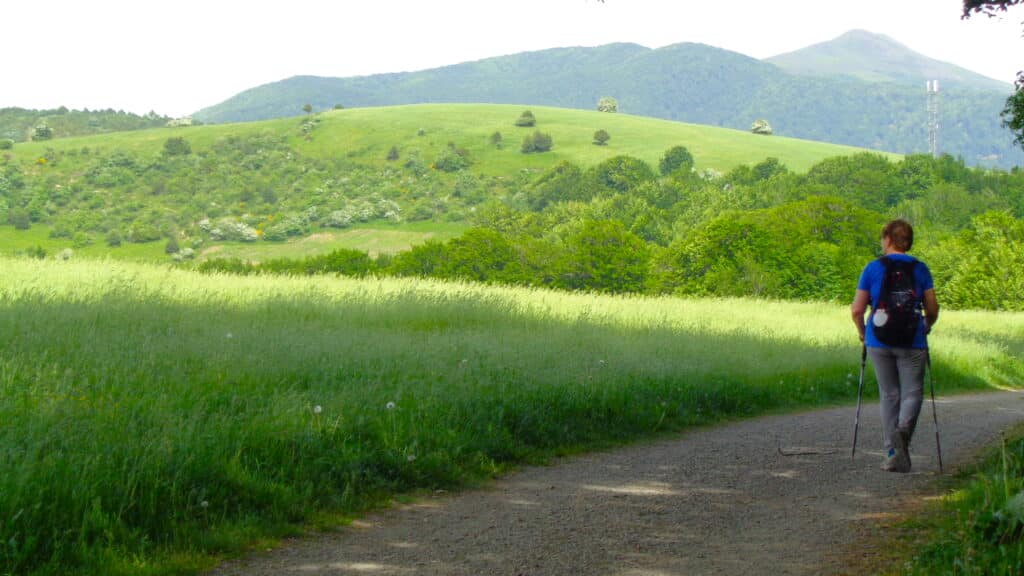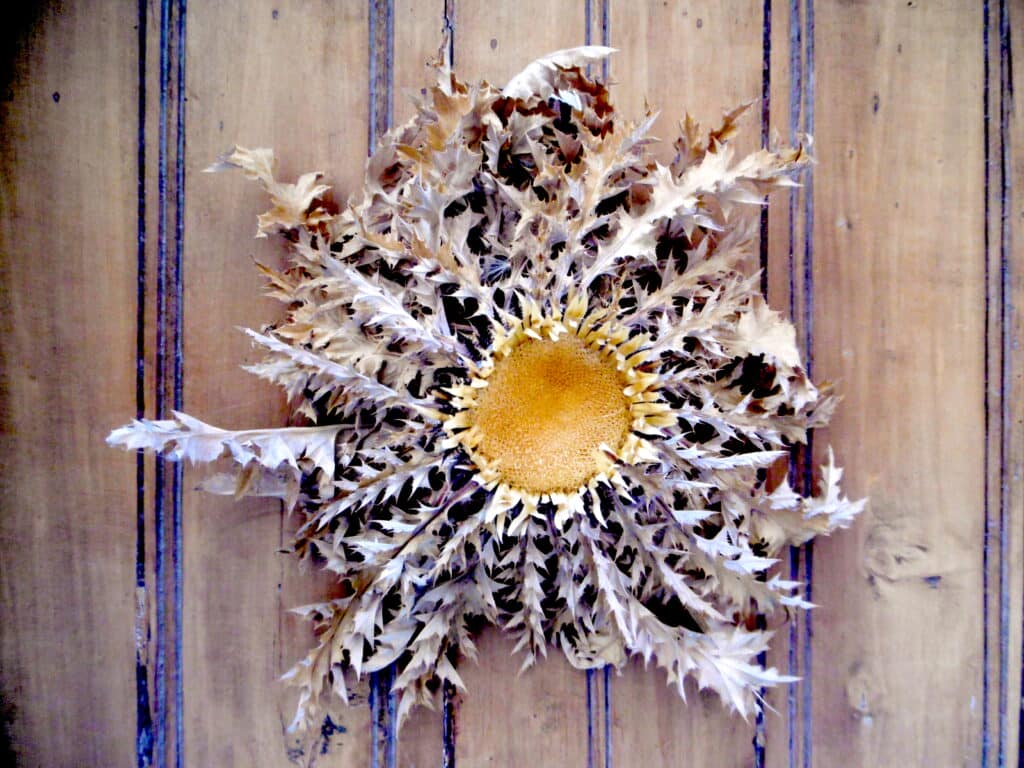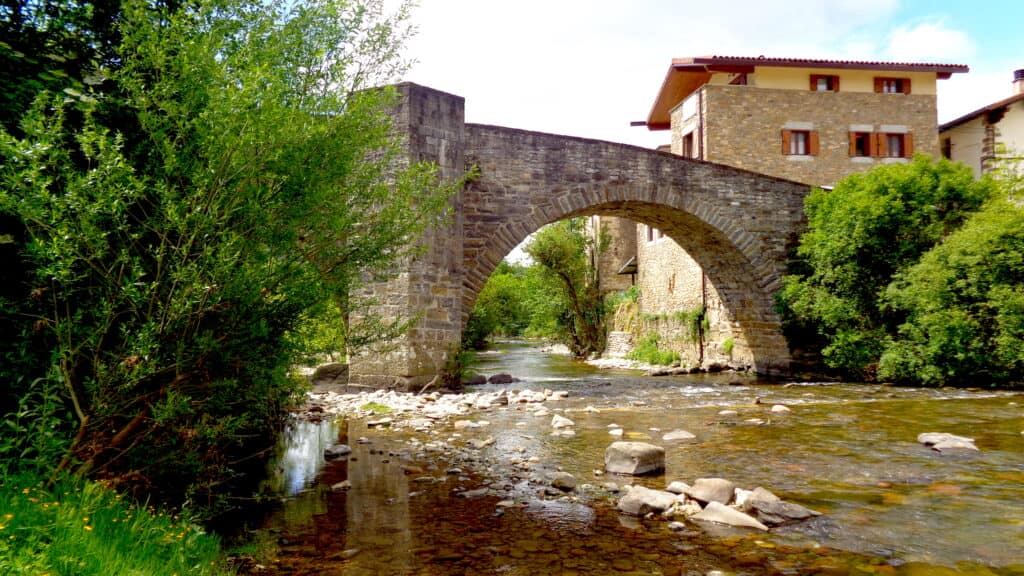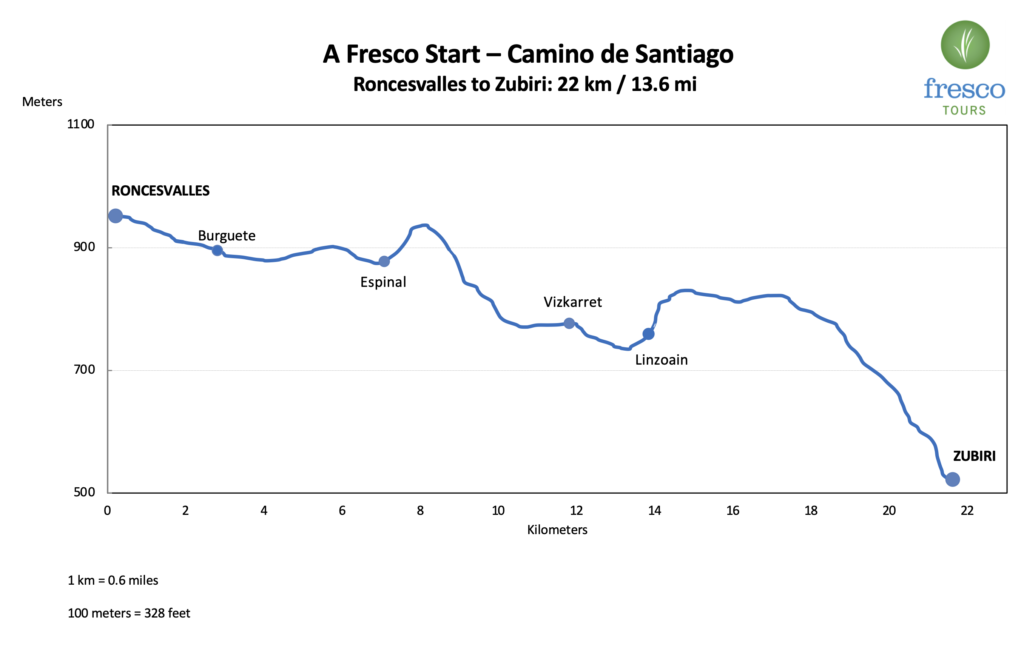Well rested and having enjoyed a delicious breakfast you will depart Roncesvalles and follow the yellow arrow through pastures and fields that make this part of Basque Navarra so famous for its local fresh produce. Today you go from Roncesvalles to Zubiri, walking by “caserios,” giant stone farmhouses that have been in the same family for generations and generations.

Your first stop is in the town of Burguete, which, like Roncesvalles, has a long history of hosting pilgrims making their way to Santiago de Compostela. One of the village’s notable landmarks is the parish church, which is dedicated to San Nicolás de Bari. As you continue through the town you will find a monument that honors the writer Ernest Hemingway. Ernest Hemingway, the renowned American novelist and Nobel laureate, spent time in Burguete and the surrounding area during the 1920s. He visited the village while researching and gathering material for his novel “The Sun Also Rises” (also known as “Fiesta”).

You will continue walking and arrive in the town of Espinal. As you walk through the villages in Navarra like this one, you may see what appears to be a large dry flower attached to the main door. This is a dried local thistle known as the Eguzkilore, and the tradition of hanging one on the front door provides protection to the dwellers of the home. The tradition emerges from Basque mythology, when Amalur (Mother Earth) created the moon to comfort the humans who were afraid of the creatures that roamed the dark, but the creatures were not afraid of the moonlight. So, Amalur created the Eguzkilore, a flower that resembled the sun and would protect the humans at night.

Your destination today is the village of Zubiri, which is at the bottom of the valley. The village is best known for its medieval bridge known as La Rabia, which was used by farmers in a ritual to prevent their livestock from developing rabies (rabia) in Zubiri.







